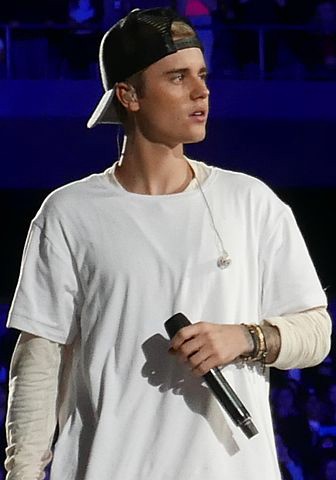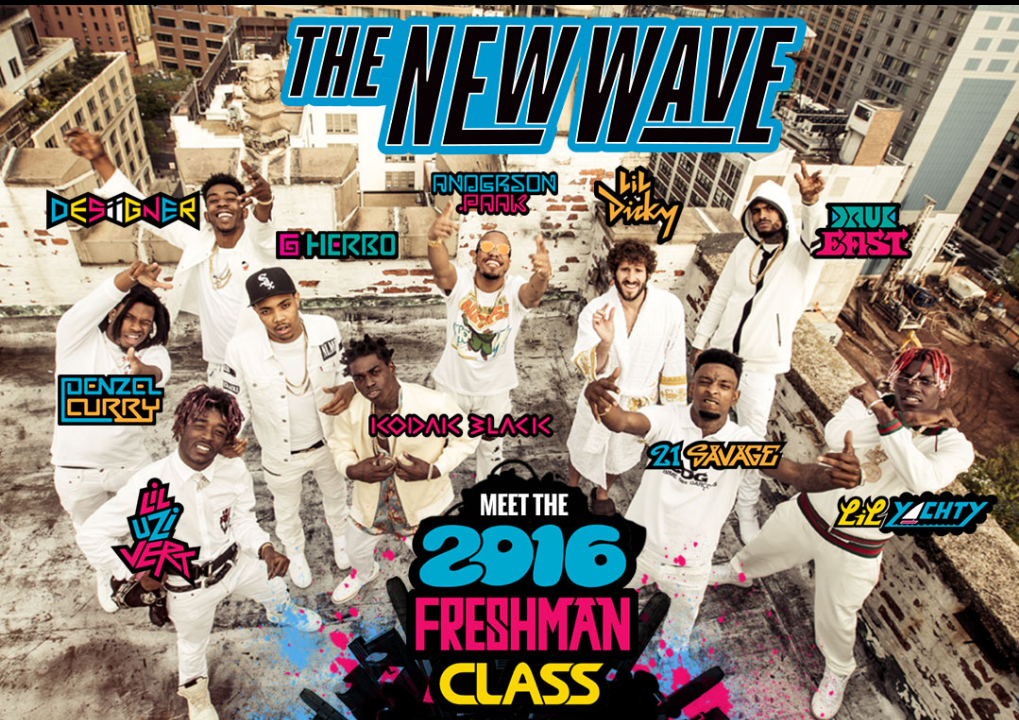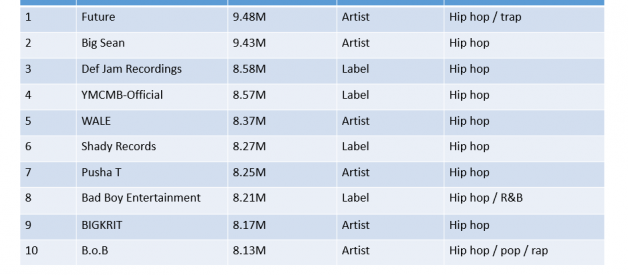When startups try to measure progress and performance of their products, they use key performance indicators (KPIs). Music artists are in many ways similar to startups. They create, publish, sell, negotiate, deal with payments, do marketing? However, it is really hard to find relevant performance indicators for artists. But what?s true for businesses also holds true for artists: without numbers it is significantly harder to be successful. And sometimes it even kills a career before it starts.
In this post I want to share some insights and maybe some surprising facts around the numbers of one of the biggest online music platforms ? SoundCloud. Disclaimer / Warning: the following analysis features personal opinions and was performed by professional SoundCloud listeners. The report is not sponsored or endorsed by any artist, label, or SoundCloud. The results are based on publicly available data and do not claim to be complete, correct, or representative. Do not analyze graphs with more than 500 million nodes at home.
Current state
There are roughly 1,000 artists on SoundCloud that have follower bases exceeding 250,000 users. The artist with the most followers is not Skrillex, Avicii, The Weeknd, Kanye West, David Guetta, Justin Bieber or Drake. It is Future with 9.48M followers – a gigantic figure in the SoundCloud ecosystem.
Here is a list of the top 10 profiles by followers count:
 All follower numbers are rounded down. The genre information was extracted from the respective Wikipedia pages.
All follower numbers are rounded down. The genre information was extracted from the respective Wikipedia pages.
All of the top ten users are (US) hip hop profiles. There is not a single non-hip hop, non-US profile in the list. Four out of the top ten profiles are record labels. UMG and Sony are dominating the top ten.
If you expected EDM here (I did) you probably either did not read Liv Buli?s article from 2013 or you live outside the US. In terms of fan community sizes, hip hop artists have clearly dominated one of the biggest music platforms for years ? a European startup with HQ in Berlin, originally known for electronic music. But let?s see if things change when we look at performance metrics other than followers count?
Vanity Metrics
Vanity metrics are the kind of numbers that you would tell your friends to impress them. In front of investors or business partners however you would rather carefully advertise them. They are often manipulated and supposed to make your business appear better than it is and are not the best indicators to determine the health of your business. Downloads for example are often considered to be vanity metrics. A download means that someone downloaded something. Period. The important part is what it does not mean: it says nothing about whether your software got installed or deleted immediately, if it is used regularly, if people liked it etc. Playcounts could be similar to downloads. Music is an experience good so in order to determine the quality of it one has to listen to it. It says nothing about the intention behind this listen or if the listener actually liked it, recommended it and so on. OK, now it?s time to check some music metrics and how they could be interpreted.
Music Metrics
A reasonable and intuitive definition for engagement might be this:
The more effort and time it takes to perform a certain action, as response to a content offering, the more engaged a user has to be.
By this definition, likes are cheap. They only require a single click. A user that performs this click feels comparably safe in her k-anonymity-bubble. A repost is a much stronger response because the reposted content can be found on one?s profile, it clutters the timeline, and is represented through the respondent: you stand for this particular piece of content with your good name and reputation. A comment is the most cumbersome action because it requires typing, thinking, and sometimes even grammar? By this definition, comments represent passion, courage, and of course, time. This could make comments one of the strongest indicators for hyper-engaged fans.
Comments
Who has the most comments per track on average?

Even though (or just because) Justin Bieber has only uploaded 3 tracks on his profile and has a shy followers-count of 671K (not even 1/10 of what Future amassed), he managed to get more than 100k comments on these three tracks. Many of them as insightful as:

With ~30K comments per track he is the unchallenged leader in this top-x list, followed next by ~3k comments-per-track. The top 6 comments-per-track-list also includes (not in order) Martin Garrix (38 tracks), Vintage Culture (77 tracks), Skrillex (96 tracks), and Frank Ocean (2 tracks). Considering that with every track that is published the average comments-per-track significantly drop, Skrillex (with a cool 300k comments total) and Vintage Culture (200k comments total) have the most talkative artist communities.
Total plays
The more followers, the more plays. These two metrics probably correlate in one way or the other and will show almost identical results: Future will probably have the most plays… Ready for another surprise?

If we order the top 1000 artists by total plays, we get another completely different top-x list with octobersveryown on #1 and Spinnin Records, FettyWap1738, and Chance The Rapper on the other top positions. On position #4 we will find a familiar name: LIL UZI VERT, who was just named most followed artist in 2016 by SoundCloud. Overall, the 2016 XXL freshman class is super strong in the total plays ranking. So let?s give the freshmen some grades:

Remember that the top 1000 profiles have more than 250k followers? Check the above table again. 5 out of 10 are not even in the top 1000 by this definition, but are all in the top 1000 of users with more than 50k followers sorted by total plays. Some of them are incredibly high ranked. Lil Yachty has a relatively high followers-number compared to his lower playcounts. Does it mean that his fans do not listen enough to his songs? Or does it mean that many of those who listened to a song became followers? How are plays connected to other performance indicators?
Likes per playcount
Likes and follows are the Internet?s currency. They keep everything running smoothly and keep everybody busy. The TV show Black Mirror even showcased how likes eventually could become a real currency. The feeling one experiences when receiving a like is often compared to that from hard drugs.
However, if we look at likes from a key performance indicator (KPI) perspective, they are double-edged swords ? more likes per playcount definitely mean happier artists, but do not necessarily mean better tracks:
If a track is played 150 times and receives only 3 likes, it must suck, right? How about 147M plays and 2,3M likes? This is actually the ratio of Soundcloud?s 2016 top hit:
And even though you might say: ?Correct, this is because that track sucks? ? the bigger problem with likes is that a user can only like a track once, but listen to it multiple times. Having this in mind 50:1 doesn?t really sound that bad anymore. Btw, the signing of Desiigner was probably the smartest music business decision in 2016 based on data.

But coming back to the likes-per-play ratio: what actually happens when we order artists based on this performance metric? We know that artists with strong fan communties who would listen frequently to their songs cannot win this category. So who?s going to profit from the likes-per-play metric?
The answer is: content that has high quality but is only listened to once. Good candidates are mixes or sets, but if we look at the data the real winners are..

BBC claims some of the top positions here with podcasts ? many of them with just a few plays and comparably high like-per-listen ratios, which probably means they have loyal fans that subscribe and really enjoy their content.
Next, let?s clean data a little bit by filtering out tracks that have less than 500 plays (to get rid of newly uploaded tracks, podcasts with 1 play and 2 likes, and SoundCloud Go migration effects).
Now we see W.A. Production, Defected Records, Boiler Room, and some other good house and EDM resources. So the ?old SoundCloud? still exists and can be found when the correct filters are applied.
Summary
Different artists, labels, and aggregators with different genres have different fans and fan communities. These fans have different behaviors, and for most early stage artists it makes no sense to compare themselves with established superstars. Do you want to be the next Future, Justin Bieber, Lil Uzi, BBC, Defected Records, Desiigner, Damian Marley, or Skrillex? Do you want comments, plays, likes, followers, or something else? It is hard to say which metric to focus on when you only have the overarching point of view.
In a second post I would like to help artists navigate the confusing music landscape and find metrics that actually matter for them. The post will show why time is probably the most critical factor, why growth is one of the strongest success indicators, how startups use machine learning to find new artists for labels, and why 95 followers might be a good number to get signed in 2017. If you enjoyed this post and are ready to discover more, follow me on Medium or Twitter, ? this post and stay tuned.
About the author: Philipp is the CEO of Hytag and co-founder of Autobeat Player. He previously studied software engineering and wrote his thesis in computer vision and sensor fusion at MIT. He likes building real products for real people.


